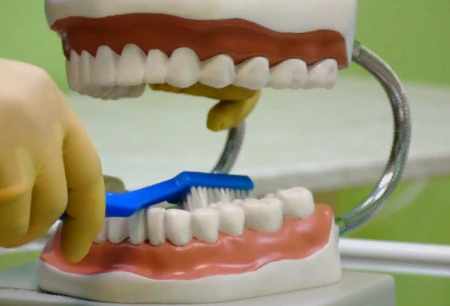Even people who brush their teeth correctly and on time don’t always know when to replace their toothbrush with a new one.
The health and beauty of your teeth depend not only on good hygiene, but also on many little things that seem unimportant at first glance. This includes changing your toothbrush. It turns out that regularly brushing your teeth with a good quality toothpaste is not enough, you need to change the brushing tool itself, and at certain intervals. We’ll find out today how often you should change your toothbrush and why.
Toothbrush Replacement Rules
Brushing with a toothbrush means that it comes into direct contact with your teeth, gums and mucous membranes. The germs on it can cause an infection, mouth disease, or even spread into your body and cause adverse health effects. That is why it must be kept perfectly clean.
As you use your brush, not only does it lose its original appearance, but it collects germs that get there during brushing from your mouth. In their new environment, they begin to multiply.
In the first weeks it is not critical – the number of bacteria is small and poses no danger to humans. But after months they become too numerous, they are “joined” by microbes from the external environment. These organisms get crowded and do not mind “moving” to our teeth and gums. According to research, up to one hundred million bacteria can live on the brush surface.
Therefore, experts insist on regular replacement of hygienic tools. At what intervals and how often to change your toothbrush is an equally important question.
How Often You Should Change Your Toothbrush
Studies have found that the maximum safe period of toothbrush use is three months. Every three months is the time you should replace your toothbrush. Less often is okay, less often is not.
Three months is the optimal time during which the brush is safe and fully performs its main function, which is to remove dirt, food and drink debris, plaque and bacteria from your teeth.
With use, the bristles lose their practical qualities – the hairs begin to wrinkle and shaggy, they clean teeth worse, miss dirt, and in some places they can not get at all.
However, the answer to the question “how often should you change your toothbrush” is not always straightforward. In some cases, replacement is required earlier:
- After experiencing infectious diseases (flu, herpes, acute respiratory infections). Even if you have fully recovered, pathogenic bacteria remain on the villi, which can provoke reinfection.
- If the bristles are badly worn out, if they’re shaggy, the short bristles won’t be able to clean properly, it won’t do any good. Deformed bristles can damage the soft tissue of the gum, causing an inflammatory process.
- If the bristles change color – if they are darkened, yellowed, or stained.
- When plaque appears on the surface or at the base of the bristles.
- When a brush has fallen on the floor or elsewhere, even if you immediately pick it up and rinse it thoroughly with hot water or boiling water or disinfectant, there is no guarantee that there are no germs on the surface or inside the bristles.
- When mold appears. The bathroom is a favorable, moist environment for fungus, germs, and unwanted organisms. Even if you carefully monitor the cleanliness of the brush, keep it in a special case, it will not stop mold.
All of the above applies to standard hygiene products made of plastic and synthetic brush heads. The exact amount of time to change your toothbrush depends on the material:
- bamboo brush – every two months – disease-causing bacteria build up on it faster;
- natural brush – natural materials have higher rates of microbial growth, the brush itself is softer, it wears out more quickly and should be replaced every month;
- Tools with wooden handles – every month, wood is a favorable environment for bacteria;
- brush heads for electric brushes are made of firm dense materials and need to be changed every 4-5 months;
- Children’s silicone brush heads every 3 to 4 months;
- Standard baby pads – every 2-3 months.
The manufacturer indicates the recommended replacement time on the package.
If another person brushed your teeth accidentally, even in your family and not suffering from any diseases, you will still need to change it.
It is advisable to change sanitary tools more often if they are stored in a shared bathroom near the toilet. And when stored without a case – it is easier for pathogens to get on the surface or inside the bristles.
To brush properly served the allotted period, after each use clean it with soap and hot water, ideally – use a sterilizer. It should be placed in its case pre-dried and stored in an upright position.
What’s at the Risk of Not Replacing It in a Timely Manner?
While it’s tempting to extend the life of your toothbrush, you shouldn’t do it. Using it too long can cause serious problems:
- discomfort/pain while brushing;
- Micro trauma to the mouth;
- Bleeding gums;
- Infection of soft tissue;
- Inflammation of the gum tissue;
- Gingivitis, cavities, periodontal disease, and other conditions
- Development of systemic infections;
- formation of plaque, tartar;
- Bad breath.
If your teeth aren’t clean enough, you’ll have to visit the dentist more often, and that’s a much bigger inconvenience than a quarterly brush change.
If you’re having trouble keeping track of dates, it makes sense to get a brush with an indicator – at the end of its life, the bristles will change color and let you know it’s time to make a replacement. And even if you’re conscientious about changing your hygiene products at the right time, you shouldn’t forget to take care of them – it’s the only way to protect yourself from dental disease and enjoy a pain-free life.






